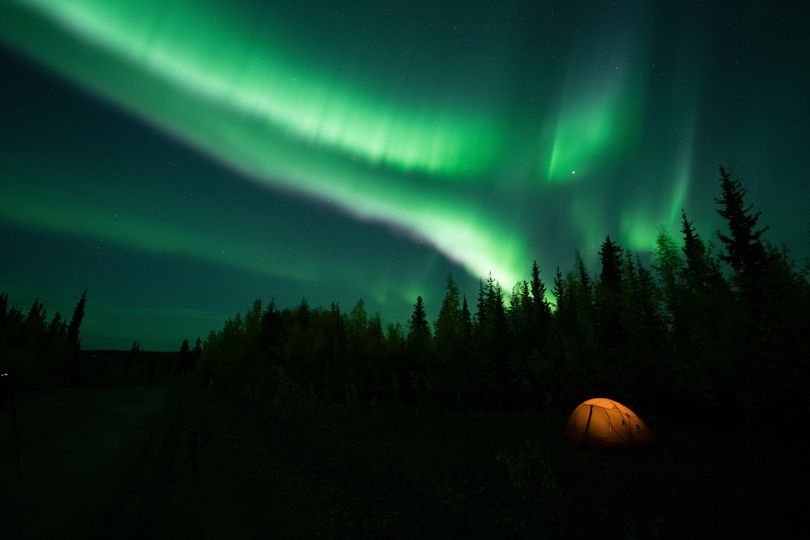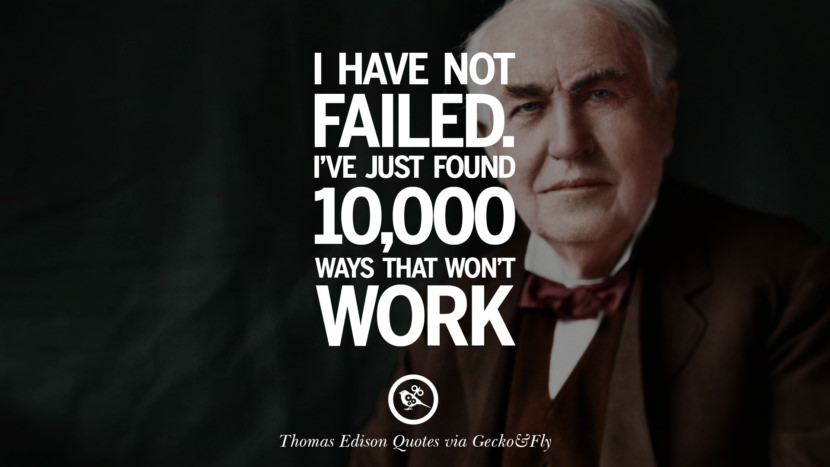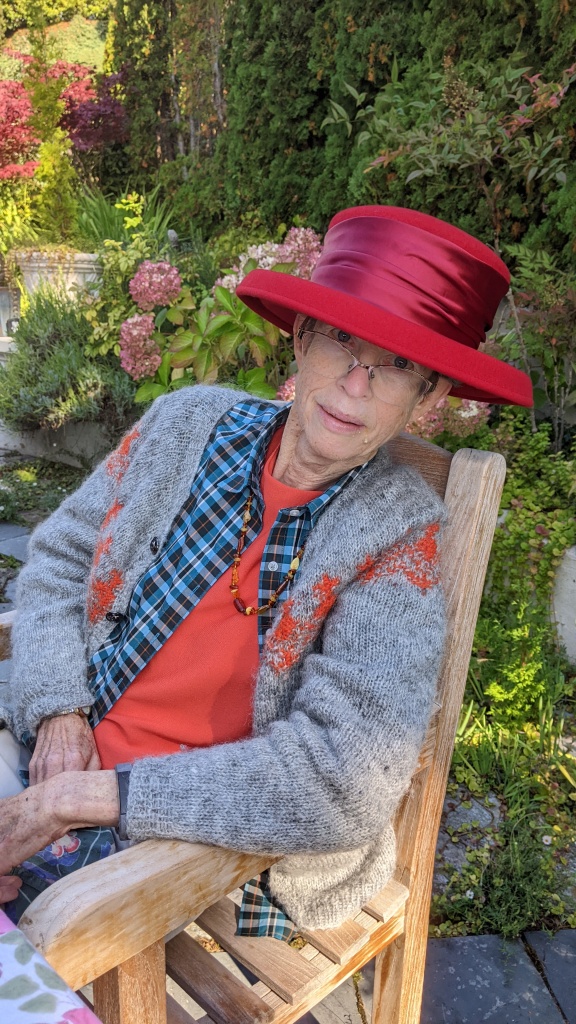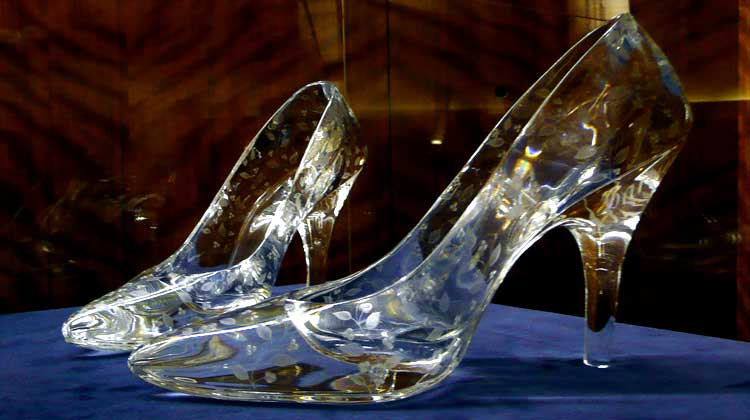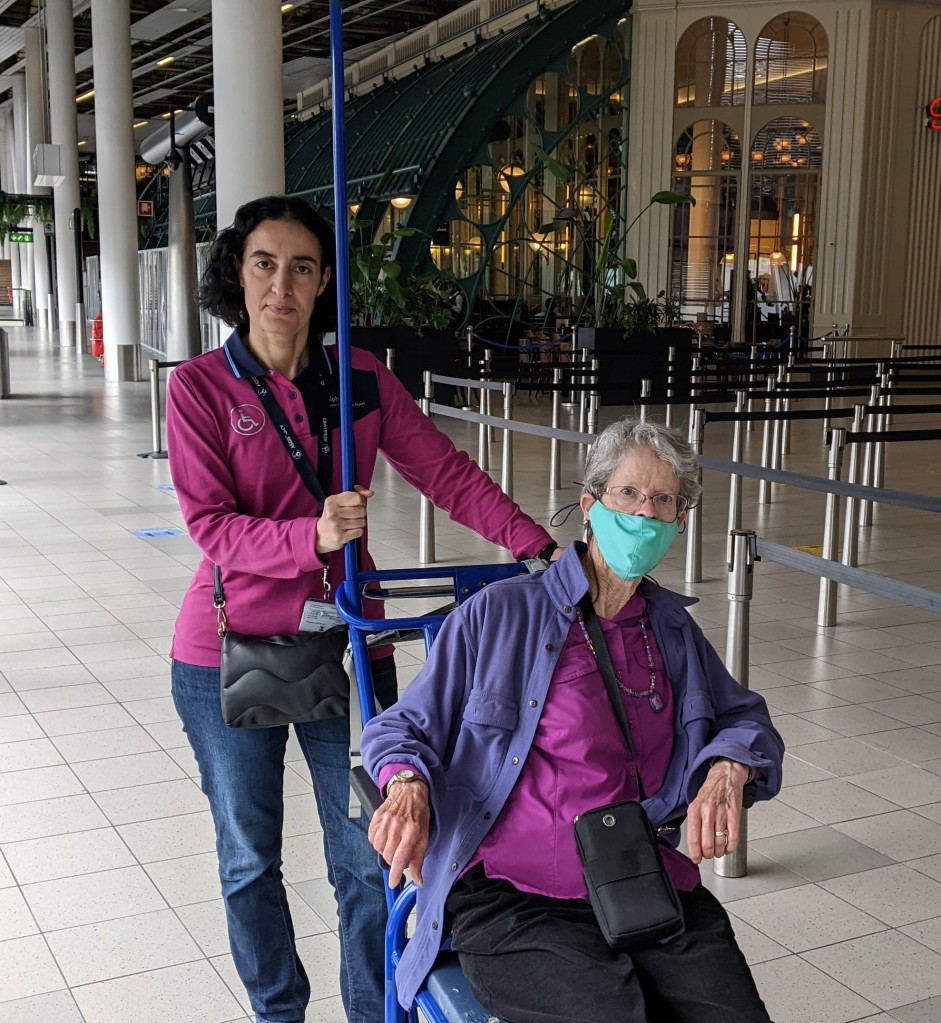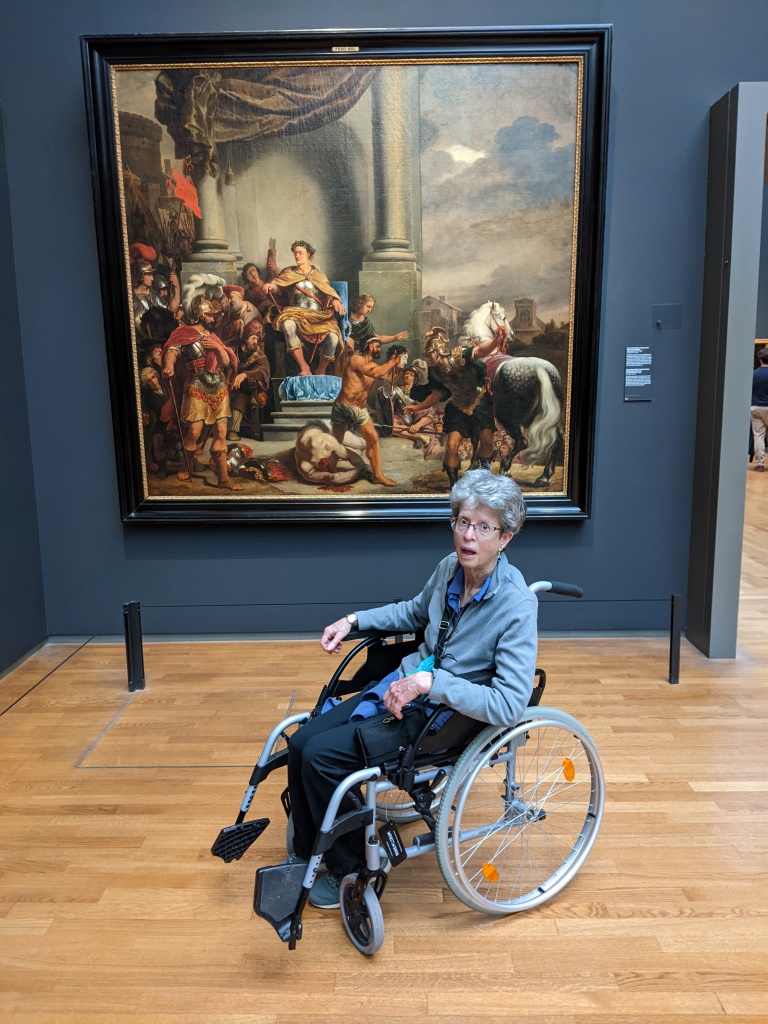I just about fell out of my chair in the examining room when my doctor said ” oh, yes that’s very common.” Before I tell you what is “so common”, let me give you some examples. of the weird phenomenon that impacts over half the Parkies population.
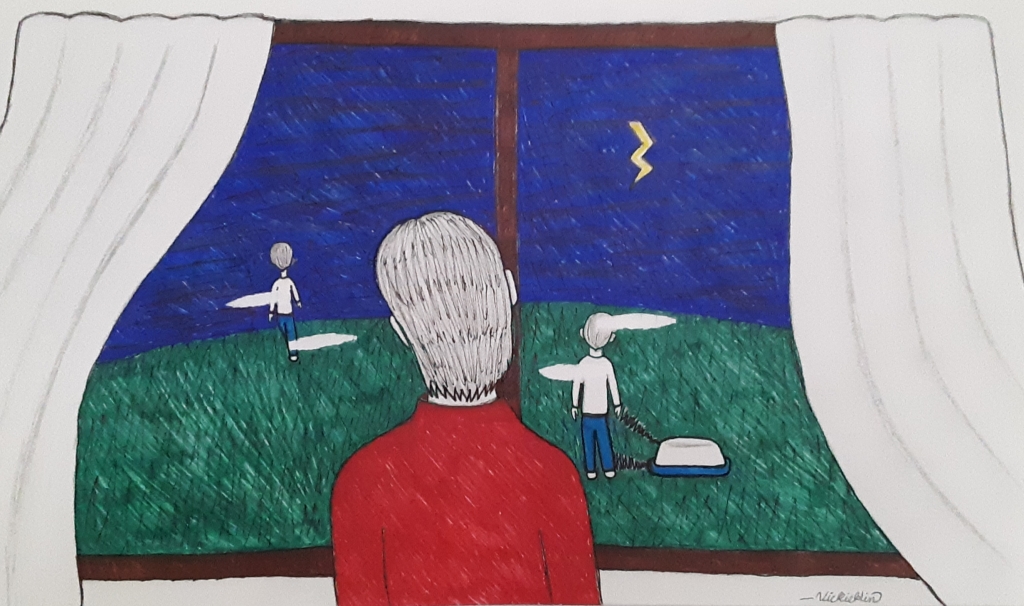
Older woman watching little boys Artist: Vicki Hin
First, a poignant tale: From my window, I see two little boys in the garden next door. The boys are both dressed in white tops and blue bottoms. One of the boys walks away. his image shimmers (picture a 1950s TV transmittal breaking down) and then disappears entirely. The other boy also disappears, but not before I can see the top and bottom turn into an irrigation box with (you guessed it) a white top and blue bottom. My prosaic husband says the blue fabric is –a tarp.
I really can’t tell you how long I’ve had encounters with these people–..three or four years maybe? It’s difficult to communicate with people who don’t communicate with you. My husband would be snorting right now that why would I want to communicate with entities who don’t exist.
Here are my “rules” for dealing with this strange population:
–I call them the Quiet People because they are. Not a word…not a scream, not a grunt, nada.
–It’s hard for me to believe that I’m the only person in the world that can see them. I’m just not that creative! When do my script residuals start flowing in?
–Like Dracula, these people hide themselves from the sun, or more accurately, humans. If I approach them with a camera, Poof! they disappear. They disappear even faster when the camera is wielded by a “normal” human.
Many more notes and warnings I could be writing but. will stop here for now. The secret word referred to in the first paragraph is — psychosis.
To my horror, over half of Parkies’ patients experience psychosis.
I am determined to get out more blog posts on a more timely basis, so I hope to have a follow-on blog soon.
In the meantime, I am entertained by illusions most nights. I think my favorite illusions are the angels on snowmobiles.
Or…are they real?


